Witness
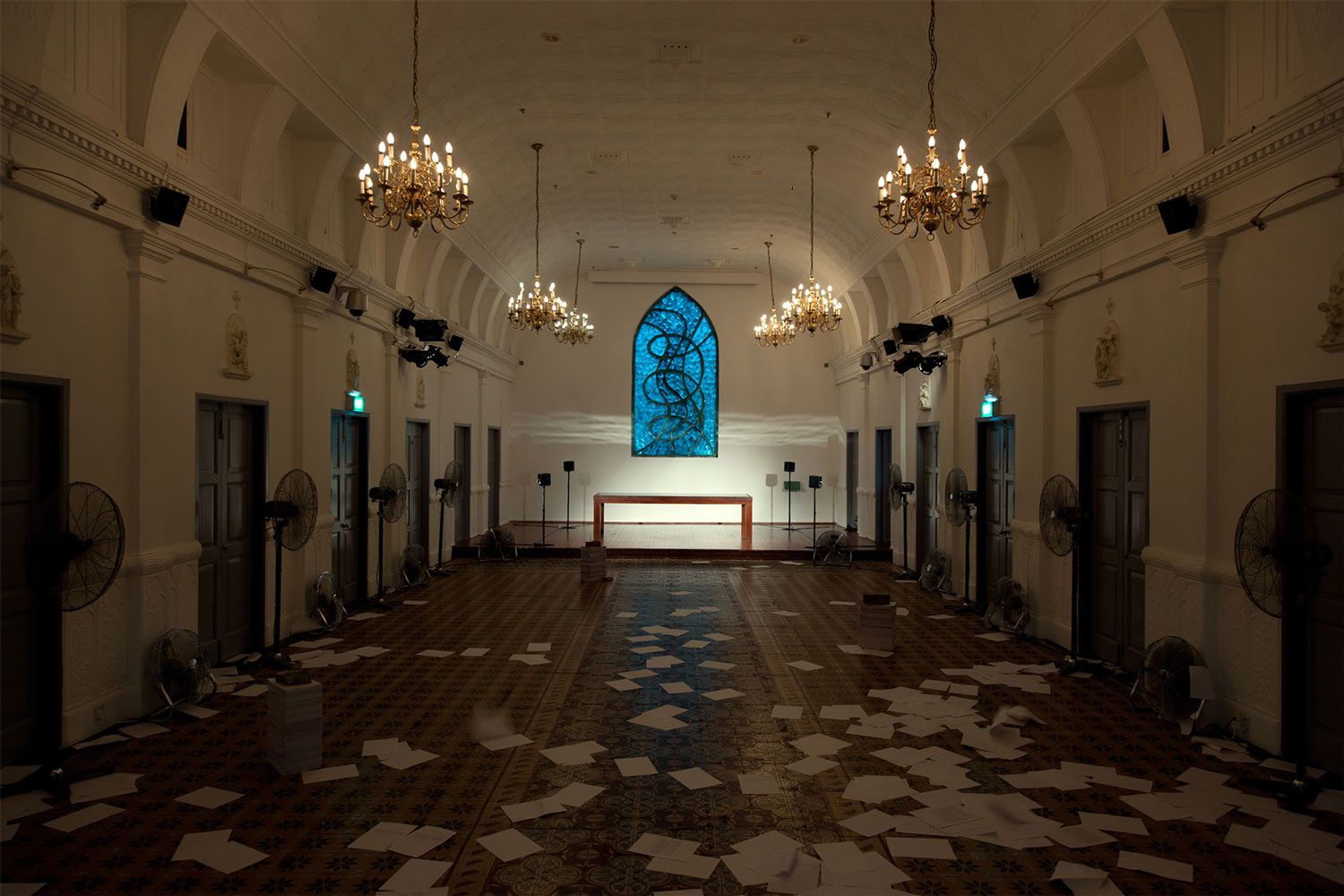
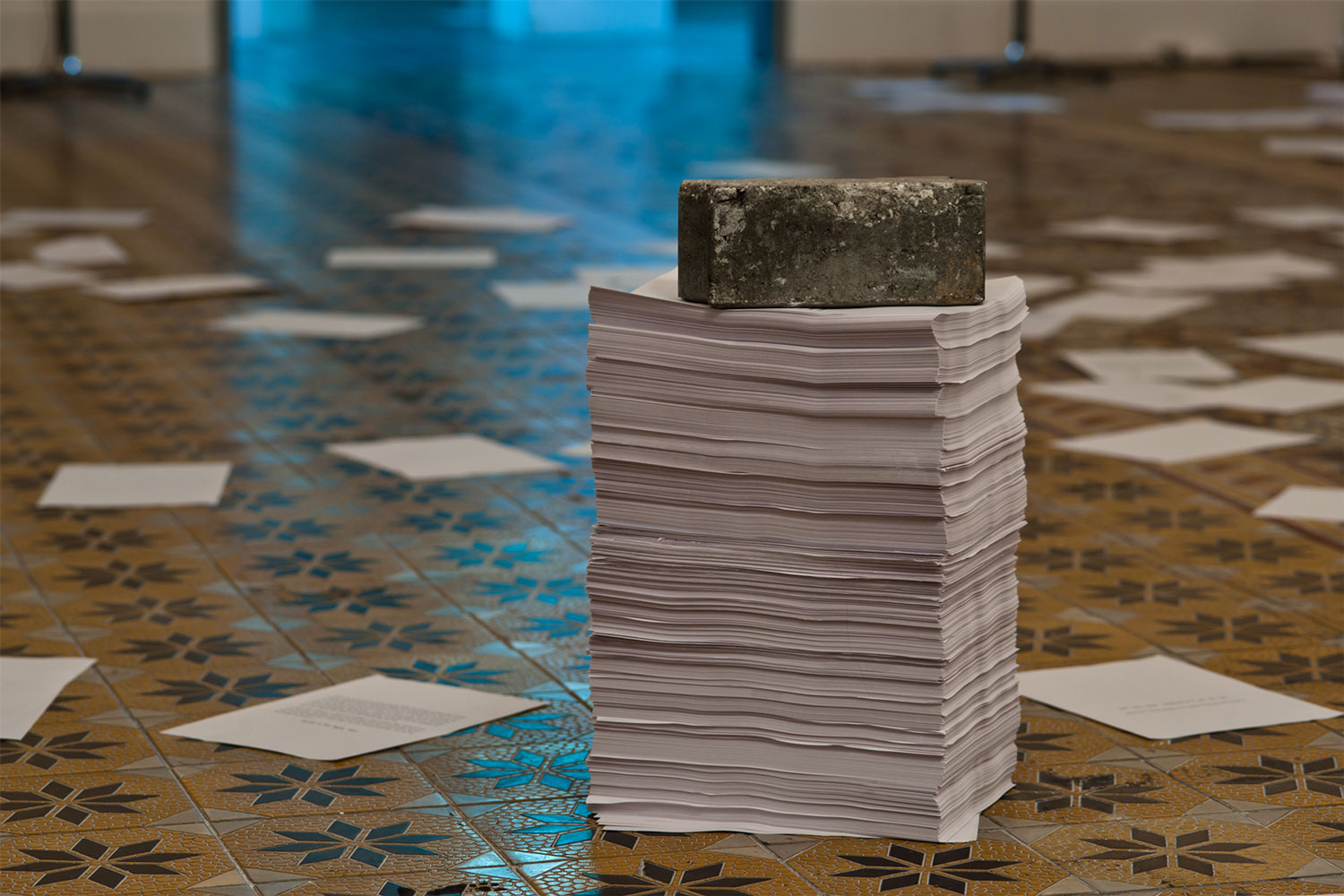
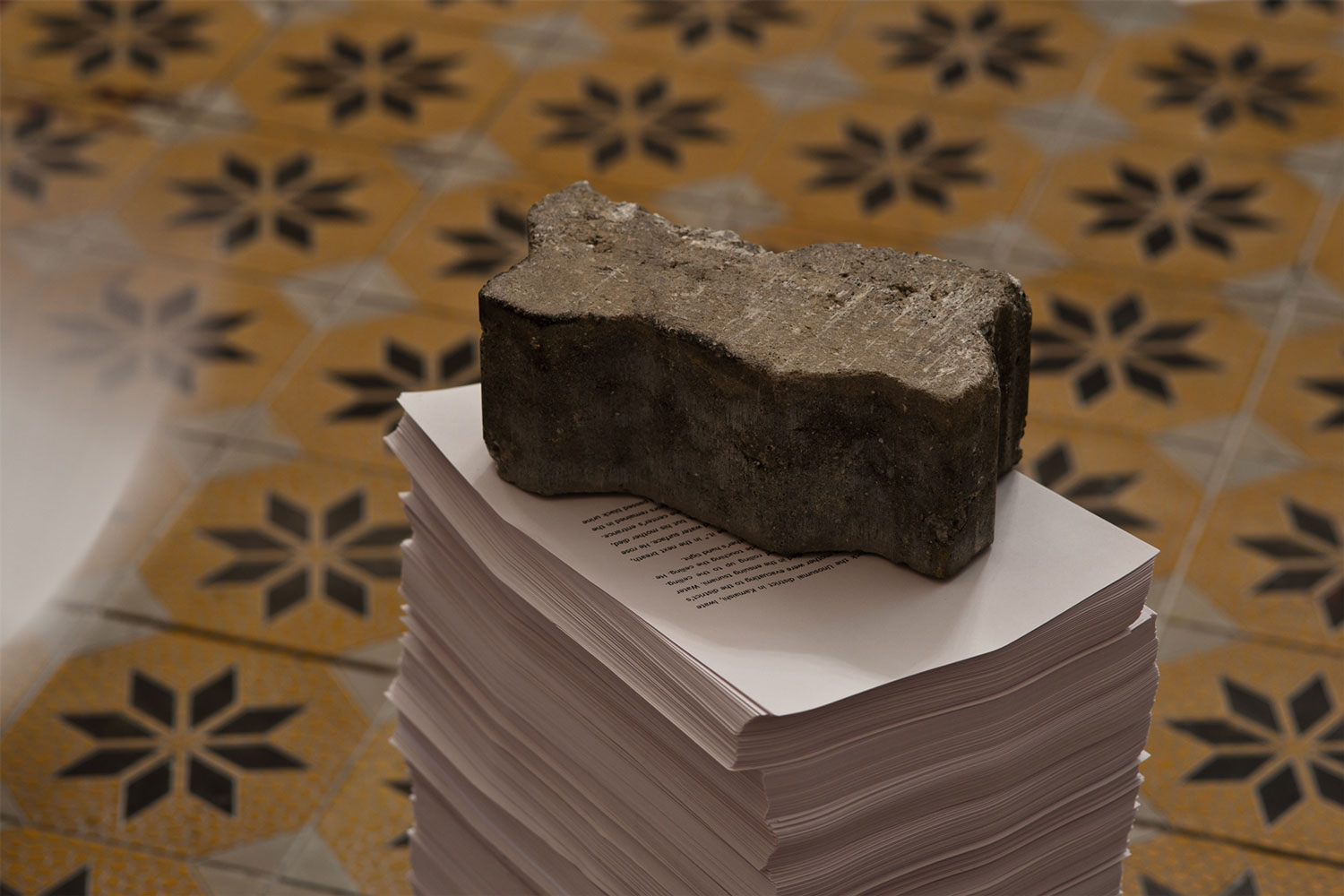
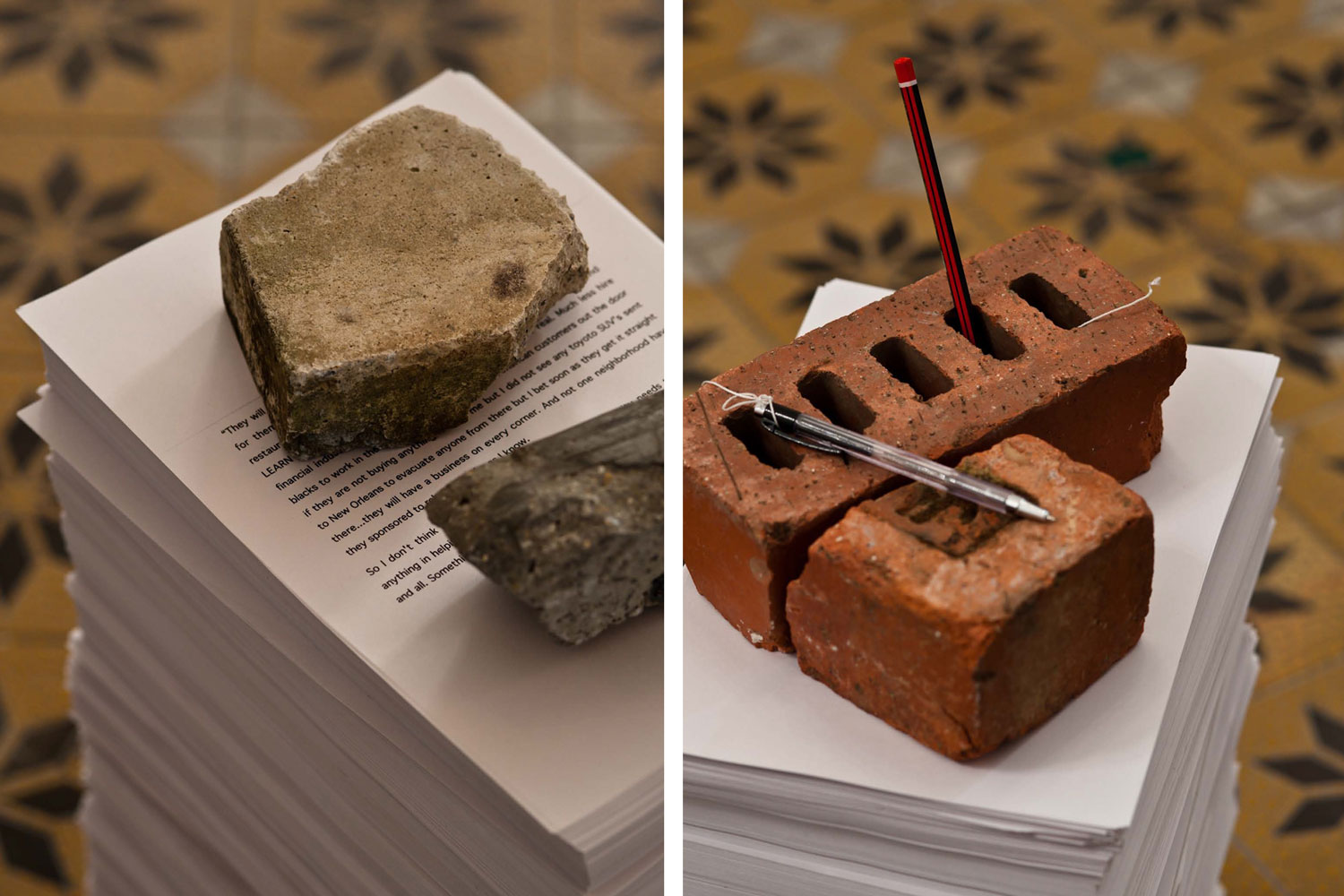
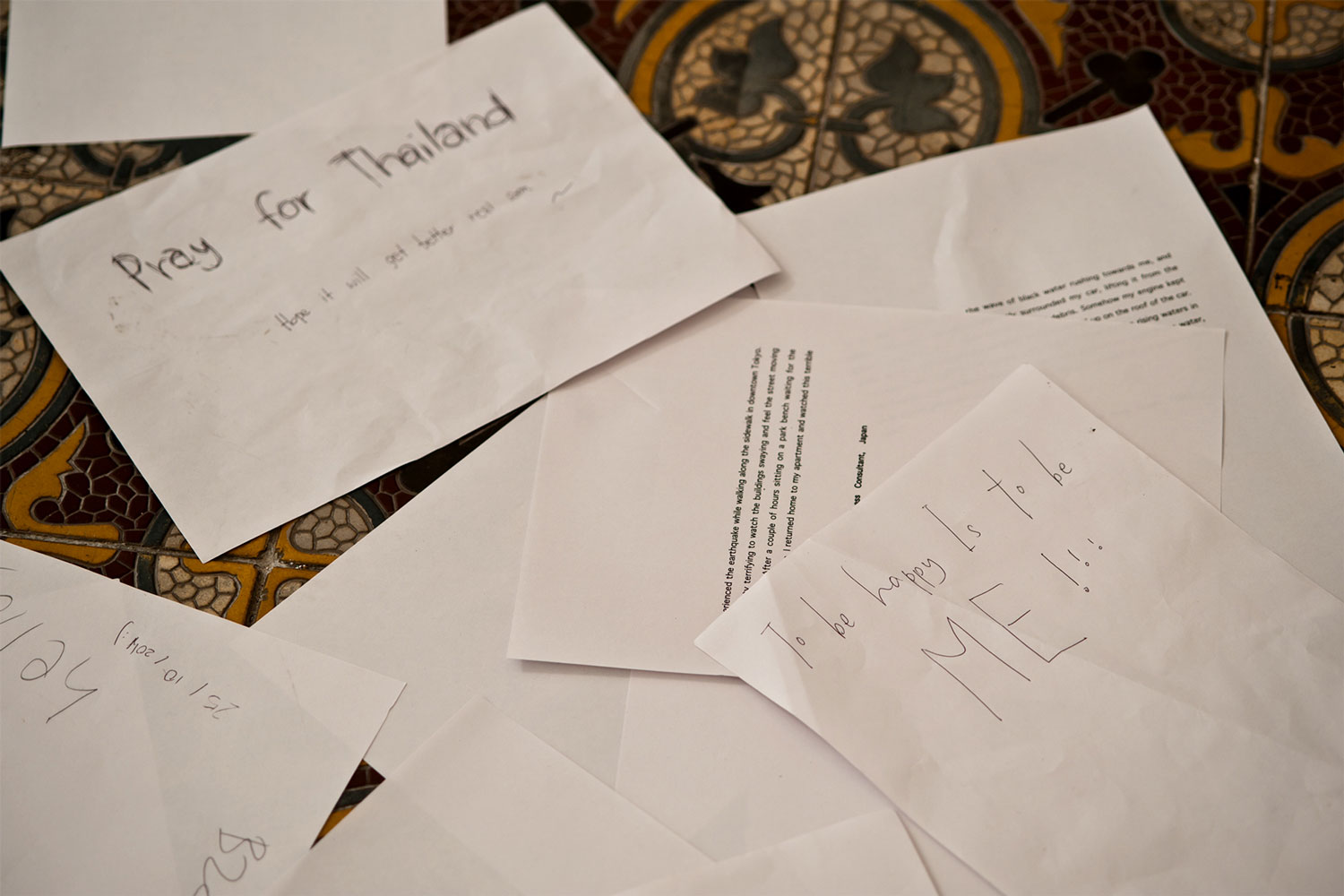

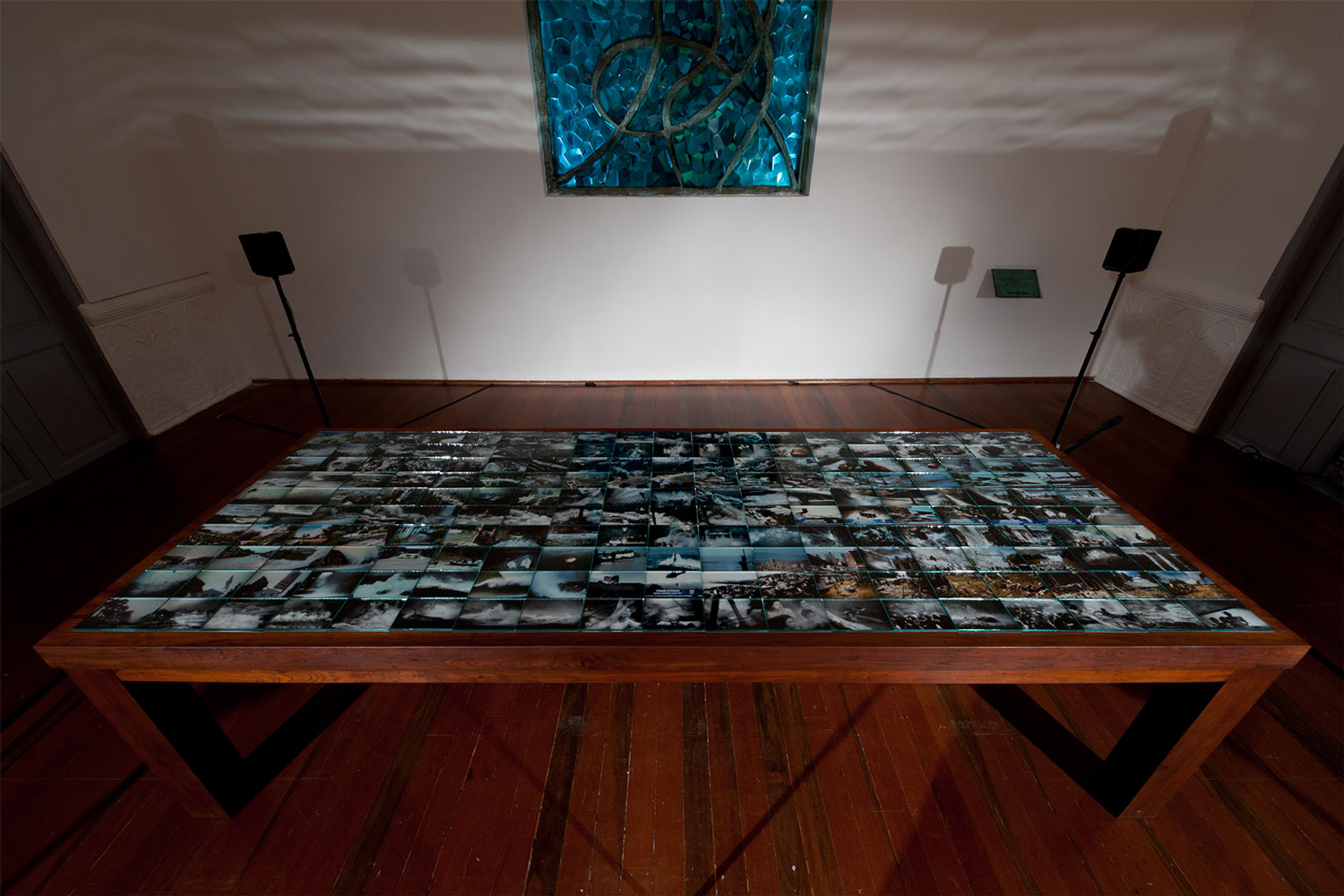
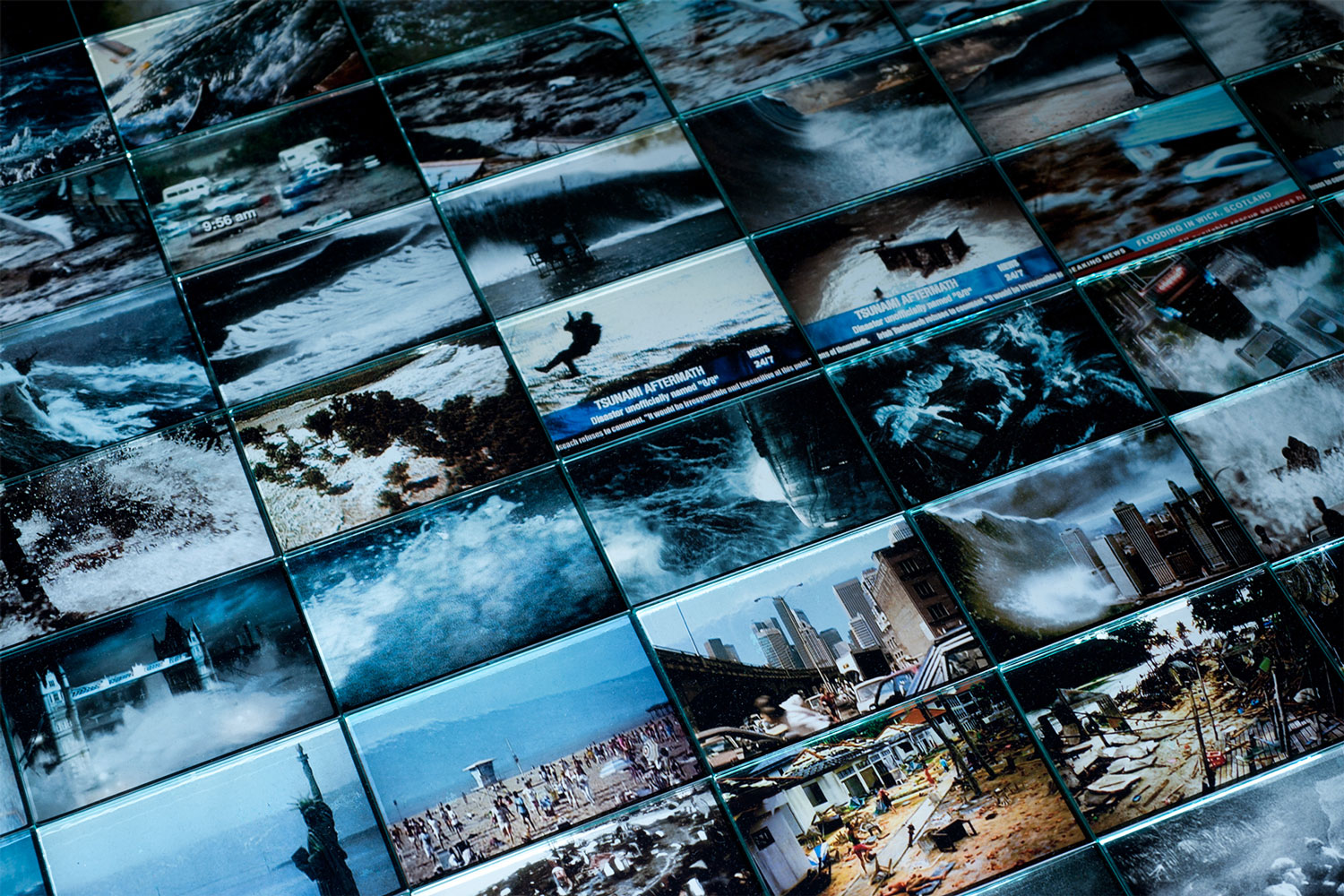
Witness | 2011
- Size
- 21 x 9 x 4m
- Medium
- Electric fans, digitally printed paper, wooden table, digital photographic prints, glass sheets, rubble and speakers
- Exhibition
- Singapore Art Museum (23 Oct – 30 Oct 2011), Singapore’s Writers Festival, “Transaction”, Singapore
The word “transaction” is defined as “an act, process or instance of transacting” as well as “a communicative action or activity involving two parties of things that reciprocally affect or influence each other”.
It is this definition that forms the starting point of exploration in Donna Ong’s installation piece, Witness. The work delves into the phenomenon of web communication, in particular, the rise of online social networking, blogging and other similar online exchanges. Using a popular topic of conversation as a focus - in this case, the recent Japan earthquake tragedy - posted comments from eye-witnesses and commentators will be collected and displayed, to explore and examine our human response and interaction after disaster. How do we respond? How should we respond?
The installation traces the various responses made during the tragedy from posted comments of eye-witnesses as well as commentators around the world and looks in particular at five layers of communication. Firstly, between the victims of the earthquake and the global community through the posting and media coverage of their eye-witness accounts and experiences through the internet. Today, because of media coverage and tabloid journalism, everyday activities become “great effects” (according to John Langer). Casual comments are elevated into statements that are given attention, consideration, and weight through continued media coverage.
Secondly, between the global community and the victims, as they respond back to the victims through their direct response and reactions. Statements from eye-witness accounts to the media or posted online through blogs and youtube videos, share the victims’ firsthand experiences with the world.
Thirdly, between the netizens themselves as they communicate to each other and respond to each other’s comments and opinions about the earthquake through the internet. How and why does abusive or offensive comments take place? What contributes to the netizens’ lack of fear and tact, when they provocative and offensive remarks? What are the underlying issues behind each individual’s inflammatory response? For example, in the case of Chinese netizen’s negative response to the Japan’s earthquake, we uncover past issues and interactions between the two countries that have coloured their response.
Fourthly, the interaction between the real, imagined and remembered image. Oftentimes, victims in disasters comment that the event was “just like a movie”. Are our experiences shaped and tainted by the pre-existing source of images stored in our memories from the many disaster films and images we have seen?
Lastly, between the posted comments and the current audience viewing the work. What is our human response in the face of suffering? Are our responses necessary, adequate or appropriate? The visitor to the installation is invited to be part of the “transaction” taking place by responding to the work and writing their own comments on the empty sheets of paper provided.
